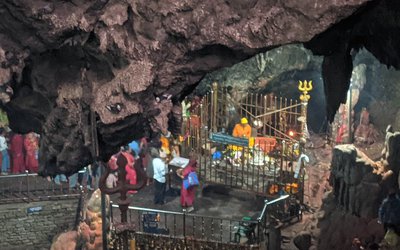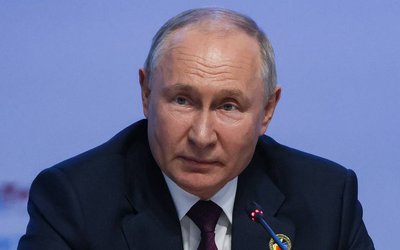
What are the current problems in the trade deficit of Nepal?
The current problem of Nepal is the supply-side constraints. Our product base is not big. First of all, Nepal needs to expand its product base. Only after that we can talk about market access and facilitation. For this, we need investment and resource mobilization. This includes foreign direct investment and internal investment.
How about the availability of resources?
We don’t need to worry about the resources. International development partners and donors have also been supporting us and Nepal has its own internal budget. The budget, allocated to various ministries, is adequate. We need to invest the budget in productive sector and increase the productivity. For this we need to build our institutional and productive capacity. Only after this, our production capacity will increase and we will need to talk about how to enhance the productive capacity of Nepal, including in negotiations.
We have been hearing that the Nepalese products do not have the market. How do you look at this?
Even if we find market, we don’t have products. There are LDC preferences for us and many countries do not impose duty on our products. We have preferential market access in India and China. Similar facilities are there in Europe. The problem is not a market. Of course, there are certain non-tariff barriers, particularly quarantine and SPS related. In manufacturing sector, there are Technical Barriers to Trade (TBT). We have been requesting to replace both. Even if such barriers were not there, we don’t have enough productive capacities. One single buyer of Japan demanded the annual total production capacity of coffee from Nepal. If we enhance quality and capacity, Nepalese producers do not need to worry about coffee. We can address the problems coming in the course of export of coffee.
How do you look at Nepal’s negotiations capacities?
We have the negotiations capacity. After using our negotiations and diplomatic capabilities, we were able to open many new markets. As our production capacity is very limited, we cannot use the market.
Where does Nepal need to focus for reducing the alarming level of trade deficit?
I would like to stress again that the main focus should be to increase the productive capacity. We cannot contain the import by putting restrictions on certain products alone. Consumers can buy any product from any part of the world. That is what consumerism all about. It is the result of liberalization. Even if we cannot reduce the import; we can channelize the import in contributing to economic growth and industrialization. We are responsible to bring the measure and policy to make use of import in the benefit of Nepal.
What efforts do you propose to promote the export?
For export promotion, what we need to do is to enhance our productive capacity in comparatively advantageous sectors. The role of ministries is to make a proper use of budget to enhance and increase the productive capacity. Only after this we can rationalize imports and enhance exports. Imports can also contribute to economy and trade in real sense. It contributes to growth as well.
What is export and import ratio of Nepal?
Nepal’s export import ratio is in 1x9. That means we export one item of value and import nine times that. There is a huge trade deficit. The trade deficit range has been increasing every year. The trade deficit is not always dreadful for the country if the import contributes in the process of industrialization. If we expand production based through the import, it is not bad at all. Had it gone that way, it would have created economic opportunities. We would have contributed to economic growth, had we imported raw materials, primary goods and industrial intermediary goods for industrialization. This would have contributed to economic growth. Our import is less in such sectors and high in consumer goods. Thus, we need to be concerned about our import.
How do we narrow the trade deficit?
The alternative to narrow down the trade deficit is to increase the export. We need to identify the products which have competitive advantages in the international market. As a member of World Trade Organization, the market around the world is available for our products. For that we need to make our products competitive.
How do you see the barriers for Nepalese products?
Definitely, there are certain inherent export barriers. For instance, the structural barriers of landlessness and its deficiencies. For this, transit and transport costs remain high, which make our products uncompetitive. We have also the supply-side constrains to meet the international demands. We are yet to develop the supply-side capacity. Even if there is market we are unable to grab the opportunity available in the market. We need to develop products which have competitive and comparative advantages in the targeted market. Once we enhance the supply capacity, and then there is the need to increase the institutional capacity.
How do you see the role of investment?
Investment is one of key factor. We need to mobilize domestic as well as international resources. If you look at the recent trade, our export is decreasing further. One of the factors behind further decrease in the export is the great earthquake of April 25. This is an unavoidable condition. From next year, it is highly possible that there will be further increase in import as there is a need of a lot of products for post earthquake reconstruction. Import of the materials for post earthquake reconstruction will trigger further trade deficit. We need to look at the outcome of productivity of domestic and international resource mobilization.
The annual budget of the ministries is going up. However the productive growth of the ministries has not increased at the desired level. Growth is stagnant. This is the reason import is increasing and export is declining. We need to create a strong manufacturing base and industries. For this, foreign direct investment is crucial.
Is the FDI coming?
Despite all our efforts and creating conducive environment, we are unable to bring the foreign investment as per our target. FDI is not coming because we don’t have adequate energy necessary to power the industries. There is a huge shortfall of electricity. This will increase the cost of production. Another shortfall is labor problem, which is equally important. Investors want security for their investment -- if it is not predictable, nobody will come to invest in Nepal.
What is the possibility to increase export?
Our export basket is small and there are a few products with comparative advantages, but we are demanding the access to market for our products. We are raising all kinds of issue. We don’t have products, that's why we lag behind. Only after adequate products, we will need to take measures for trade facilitation to find the market. Despite small export basket, we have been demanding market and asking to reduce tariff and non-tariff barrier and documentation.
What is Nepal proposing under the trade facilitation?
Under trade facilitation, we have been demanding market access behind the border and beyond the border. We are looking at all simplification and harmonization processes. We have been doing all these since they are our priority. After all, we need to have products.
What about our new trade policy?
We are focusing particularly on infrastructure development and product development. We have also requested the donors and development partners to invest in infrastructure and product development. Our domestic resources allocated to the Ministry of Agriculture, Energy, Forest and Industry need to be invested in product development. We have been requesting them to do so as a ministry coordinating in the trade. This is one part of reducing the deficit.
Which are the major export items contributing to the huge trade deficit?
There are two major products contributing to increase the trade deficit. They include petroleum products, with 23 percent, and agriculture products, with 20 percent. As the demands for foodstuff go up, it is natural for Nepal to import the agriculture products. However, Nepal has a lot of potential to increase the agriculture production to reduce the import. Similarly, we can also reduce the import of petroleum products through generating hydropower. Despite having tremendous potentiality for hydro power, we are facing the power cut. If we can make changes in the agriculture and energy sectors, we can reduce 40-45 percent of trade deficit.
What about the import of raw materials?
The import of raw materials is for economic base and that import can help to increase export and economic growth and economic development. Thus, trade sector is one of the major priority sectors of Nepal government. Our new trade policy focuses on going for export. We are also creating a powerful high level mechanism in the policy level which will address the present challenges by adopting various measures. We are focusing on products of export potential and service.
How do you see the policies and programs?
We have institutions, policies, and programs for trade facilitation, collaboration of Nepal government, private sector, donors and development partners. Despite all these, our weakness is lack of products for export and capacities. Our efforts should be to make our investment result-oriented and productivity-oriented. We are now working with coordination of other ministries in this regard.
How about renewing the trade treaty with India?
We have also signed bilateral agreements through bilateral negotiations with many countries. Next year, we are going to renew trade treaty with India. Before this, we will do homework by assessing the scenario and dates. We are now in the process to make the bilateral treaty mutually beneficial for both the countries. Nepal appreciates the support given by India to Nepal in trade facilitation. Nepal also wants to have a more comprehensive trade treaty in the changing contexts. We are doing the homework for this. It will include investment, service sector, trading and goods. Later, Nepal will have to go for a comprehensive partnership agreement. The present concentration should be on how to utilize the preferential market given by India to Nepal. If such preferential treatment is also given to other countries in India, we need to make Nepalese products more competitive in the Indian market.
As Nepal is in the process of upgrading itself from being an LDC to reaching the rank of developing countries by 2022, what preparations had Nepal made for preferential trade?
There are three parameters for graduation from LDC to developing countries. One of the major parameter is growth. Once Nepal begins to achieve the growth targeted by LDC graduation parameter, Nepal’s economy is likely to be more vibrant. Nepal did not look for LDCs status and benefits. Nepal had made a lot of progress towards that end. However, the recent devastating earthquake will push Nepal a little bit back since it will continue to go for reconstruction for another half a decade.
- TANAHU HYDROPOWER PROEJCT: A Significant Achievement
- Apr 15, 2024
- AMBASSADOR HANAN GODAR: Sharing Pain With A Nepali Family
- Mar 30, 2024
- VISIT OF KfW AND EIB TO NEPAL : Mission Matters
- Mar 25, 2024
- NEPAL BRITAIN SOCIETY: Pratima Pande's Leadership
- Mar 24, 2024
- NEPAL ARMY DAY: Time To Recall Glory
- Mar 15, 2024
















